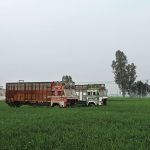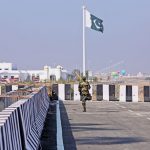1984 Sikh Pogrom: The First Day of November
Revisiting old wounds in Kanpur of the 1984 Sikh Pogrom as the UP government constitutes a special team for reinvestigation
 Rahul Pandita
Rahul Pandita
 Rahul Pandita
Rahul Pandita
 |
06 Mar, 2019
|
06 Mar, 2019
/wp-content/uploads/2019/03/Sikh1.jpg)
FOR 34 YEARS AND three months, Gurinderjit Singh has avoided passing through a street next to the locality in Kanpur where he lives with what is left of his family. It is on that street that a murderous mob burnt his two brothers alive on November 1st, 1984, using wood from a pushcart they tore apart, even as Singh and his family members begged them to stop from a little distance. “I did not even find their bodies,” he says, rubbing his temple in pain. “All I could find from the spot was one of my brother’s bangle and a key the other one carried.”
Singh is among a group of Sikhs that has gathered outside the small gurudwara in the middle of the city’s Guru Nanak auto market. Most of them run their businesses here; most of them have known each other for long. They nod their heads at each other and speak softly in Punjabi. They are waiting for the priest to come and begin the evening prayers.
“It has been 35 years, but we hope now that we can get some justice and closure,” says Ajeet Singh Bhatia, general secretary of the market union. Their hope has been rekindled because the Uttar Pradesh government has constituted a four- member Special Investigation Team (SIT) to probe the 1984 Sikh pogrom in Kanpur, in the aftermath of Indira Gandhi’s assassination.
Bhatia points at a dilapidated building, across the narrow road, whose exteriors are blackened with smoke. “Saanu yaad dilaan waste (To make us remember),” he says, as his head trembles a bit.
None of them need that building to remember, though. Their lives are separated in two parts: ‘Chauraasi ke pehle, Chauraasi ke baad (Before 1984, after 1984).’ As Indira Gandhi was declared dead in Delhi on October 31st, 1984, Sikhs began to be targeted, beginning from right outside the All India Institute of Medical Sciences where she had been admitted. The violence spread to other parts of India as well.
In Kanpur, the violence began a day after, on November 1st. It lasted for two-and-a-half days and resulted in the death of 127 Sikhs, as mobs, in many cases led by local politicians, roamed around, targeting Sikhs and their properties.
Most of Guru Nanak market was burnt down on November 1st. Like many others in the market, Kanwaljit Singh has preserved a damaged part of his shop, Goodwill Motors, which was gutted completely in 1984. He was 28, running a successful business of auto spare parts. As mobs began to systematically target Sikhs, he hid his family on the second floor of his house in Kanpur’s Lajpat Nagar area. He asked one of his childhood friends, Sushil Kumar Sikka, a Hindu, to keep a watch on his shop so that the mob spared it.
In the meantime, a mob appeared at his house and burnt down his ground floor and several vehicles standing in the porch. “There was so much smoke upstairs where I hid with my family that we could not even see each other,” he says.
Singh and his family escaped somehow. But his uncle’s family was not so lucky. The uncle, Sardar Amrik Singh, had a daughter who was to be married in 15 days. Her maternal grandparents had come from America with lots of imported articles as gifts. “They had proudly displayed these things in front of their neighbours and from there the news got leaked,” says Kanwaljit Singh. A mob that attacked their house had prior information about ‘imported saamaan’. They also wanted to abduct the to-be bride.
“They snatched my husband from my hands. Initially I thought they were interested in looting and would spare the lives of my husband and other men. But when I came out of the house, he was lying in a pool of blood,” says Harmahinder Kaur
As the horrified family locked their doors from inside, the mob shot at them from the windows. Amrik Singh’s father-in- law and one son died while another lay in pool of blood with three bullet injuries. Amrik Singh’s wife made their daughter lay in the middle of the corpse of her grandfather and brother and opened the door. According to Kanwaljit Singh, she then told them that the daughter they wanted to abduct had died as well and that they should just take away their valuables.
The rest of the family was saved after the injured brother rushed to a police station where a policeman took pity on him and sent him in his jeep to another police station from where he could take army personnel to his house and rescue others.
In the hospital later, Sushil Kumar Sikka tended to them.
But Sikka could not save his friend’s shop. “They [the mob] had a complete list of properties owned by Sikhs. They told me to run away or they will throw me into the flames,” says Sikka.
Kanwaljit Singh’s cousin’s son (who survived three bullets), Anshdeep Singh, who was born in Ludhiana later, is now a part of American President Donald Trump’s security fleet.
“My entire life was destroyed,” says Kanwaljit Singh. “It took me 20 years to get it back on track.”
For some victims though, all tracks were lost in those two days in 1984. Gurinderjit Singh’s wife Manjit Kaur begins to cry as soon as the year is mentioned. Kaur remembers that the whole family was together on November 1st. They had plans to visit the future in-laws of her younger brother-in-law; he was to get engaged two months later. As she entered the kitchen to prepare tea, a group of their Sikh neighbours came in. “They asked for the three brothers; they said they are organising a peace march,” she recalls.
The tea remained on the stove as the brothers left with the group. On the street that Gurinderjit Singh now refuses to even cross through, the group could see a mob on the other end. “Some in the group felt that we should walk towards the mob so that they feel we are in strength and not reassemble to attack us,” says Mokam Singh, who was 24 then, and a part of the march.
We kept looking from a distance. We spread our chunnis in front of them, begging them to spare the men. They were shouting: Come here, we will kill you all,” says Manjit Kaur
As they began approaching the other end, Mokam Singh recalls that somebody from the Hindu locality fired at them in the apprehension that they had come to attack Hindus. The bullet hit Gurinderjit Singh’s elder brother’s leg. As he fell, everyone else ran for safety. But his younger brother stopped to save him. They were caught by the mob.
“Someone told the women and we rushed to the spot,” says Manjit Kaur. “We kept looking from a distance. We spread our chunnis in front of them, begging them to spare the men.” But the mob kept on hurling abuses at them. “They were shouting: ‘Come here, we will kill you all’,” says Kaur.
It is then that the two brothers were set aflame in front of their eyes.
The elder brother’s wife became paralysed with grief soon afterwards and passed away in a few years. Manjit Kaur raised their three kids, then aged seven, five and three.
“My father gave money to the police. He said ‘Please help me retrieve my sons’ bodies’,” says Gurinderjit Singh’s son, Gurpreet, who runs a mobile repair shop outside his house. “They took the money but did nothing.”
Mokam Singh, who runs a transport business, was expecting a child in 1984. His family had shifted to Kanpur from Pakistan during the Partition in which he lost several family members, including his grandmother.
Singh lived in a predominantly Sikh locality. On October 31st, as news of Indira Gandhi’s death broke out, he remembers the police escorting Sikhs safely to their houses. But something changed on the morning of November 1st. “We could see that the police were turning back,” he says.
The carnage first began in the outskirts of Kanpur city. Terrible stories began to stream in, of 11 people of the same family dying in one instance and 13 in another. From the night of November 1st, Singh and his pregnant wife hid in a small brick enclosure on their terrace. There were rumours that buses full of rioters were being organised to target Sikhs. “We spent 15 nights in hiding,” he says.
After Rajiv Gandhi’s speech in which he said “When a mighty tree falls, the earth around it is bound to shake”, Mokam Singh says Sikhs panicked even more. They began leaving Kanpur, majority of them for Punjab. “They sold their property for peanuts and moved out,” says Singh.
His two brothers shifted to Punjab soon afterwards. “For weeks after the carnage was over, we would get teased in trains. People would look at us and aggressively shout: ‘Oye Sardarji!’’” he recalls. Even after the carnage was over, senior police officials refused to assure them. “I met the local senior district police chief. He said, ‘We cannot offer any guarantee of your safety’,” says Singh.
“The mob had a complete list of properties owned by Sikhs. They told me to run away or they will throw me into the flames,” says Sushil Kumar Sikka
Those who left included Iqbal Singh. He was just 18 when the pogrom occurred, and his shop was looted. He shifted to Punjab but returned six months later as he found it difficult to adjust there and his business would not take off. “It was terrible. They took away our washing machine and refrigerator. Later we realised that they did not even know what to do with them, because these things were rare in 1984. Later we saw that they had kept cattle fodder in the washing machine and old clothes in the refrigerator,” he says.
His friend, Kamaljeet Singh, nods. He and four members of his family hid in the water tank of their house for two-and-a-half days, from the morning of November 1st till the afternoon of November 3rd. “We drank water from the same tank to keep alive,” he says.
Some shops owned by Sikhs, considered city landmarks, were destroyed in 1984—many still remember them in a dream- like state: Kwality store, Chhabra electronics, Arora general store.
The day Kwality store burnt, Harmahinder Kaur, 34 then, was having breakfast with her husband, Bhagat Singh, 35, and others in the family in Sharda Nagar locality. Her brother had come visiting from Punjab. It is then that a mob attacked their house. “They snatched [my husband] from my hands,” she says.
Initially, Kaur thought that the mob was only interested in looting and would spare the lives of her husband and other men. Minutes later she came out of the house and saw him lying in a pool of blood. He had been stabbed multiple times. “He looked at me with one eye, the other was filled with blood,” she recalls.
They took him to the hospital, but there were no doctors there, except juniors, who had little clue about what to do. “They said he has lost blood and needs transfusion. We rushed to the blood bank, but it was closed,” she recalls.
As the SIT is formed, the biggest challenge for the victims is to nail the perpetrators of the crime. “It is not like Delhi where the likes of Sajjan Kumar had been identified from Day One,” says Mokam Singh. “I can see the face of the main assailant,” says Harmahinder Kaur.
One of the politicians who allegedly led some of the mobs, Vilayati Ram Katyal, a Congress legislator, was shot dead by Sikh extremists in April 1988.
In 2014, Mokam Singh filed an RTI application with police stations in Kanpur to find out the status of cases filed in 1984. While some chose not to reply, one police station (Nazirabad) said no killings had happened under its jurisdiction. “Which is simply not true,” says Singh. “We have identified some people. Now we hope that survivors can say, ‘Yes, these are the people’.”
Now that the SIT has been asked to open cases in which the accused have been let off after the initial probe, Mokam Singh and others have been getting calls from many police stations to seek information. The SIT will have to submit its report to the state government in six months.
There is no dearth of testimonies. At the Guru Nanak market, a man called Gurmeet Singh says his aunt’s two sons were burnt with wood from their own dining table. In Daboli area, Avtar Singh, a shopkeeper, lost his four brothers, a sister and his parents.
With the Congress leader Sajjan Kumar’s recent conviction in Delhi, Sikhs in Kanpur are now hoping that the SIT report delivers justice, or at least a semblance of it.
“1984 was worse than what Aurangzeb did to our ancestors,” says Mokam Singh.

/wp-content/uploads/2025/06/Cover-OpenMinds2025.jpg)













More Columns
Indian Companies Have a Ransomware Vulnerability Open
Liverpool star Diogo Jota dies in car crash days after wedding Open
'Gaza: Doctors Under Attack' lifts the veil on crimes against humanity Ullekh NP